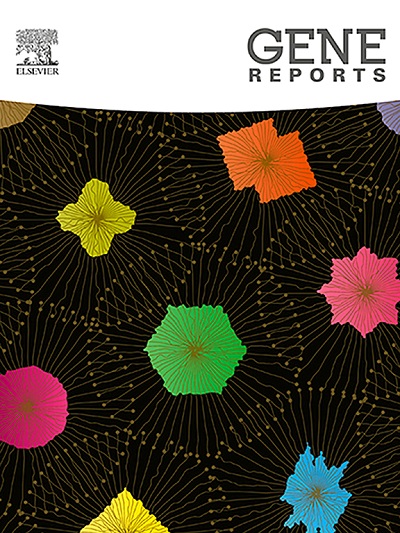In-silico analysis of novel mutations identified in Chikungunya virus
IF 1
Q4 GENETICS & HEREDITY
引用次数: 0
Abstract
Chikungunya fever, caused by CHIKV transmitted by Aedes mosquitoes, poses a significant global health challenge. This study investigates novel Chikungunya Virus (CHIKV) identified mutations in Jeddah, Saudi Arabia, through in silico analyses. The study focused on mutations detected in the E1, capsid, and nsP3 regions of the CHIKV genome, employing molecular dynamics (MD) simulations and bioinformatic tools for analysis. Methods included sequencing the virus's whole genome and identifying rare mutations in the CHIKV strain from Jeddah (2021), homology modelling done to create three-dimensional structures of CHIKV proteins, and protein stability prediction conducted using various computational tools. MD simulation was utilised to analyse the stability of mutated proteins, comparing wild-type and mutated forms. The main findings revealed three significant mutations (E1:A249T, C: A147V, nsP3:V58I) that potentially affect the stability and function of their respective proteins. The analysis predicted these mutations to generally decrease the stability of the proteins. MD simulations indicated fluctuations and conformational changes in mutated proteins, suggesting altered dynamics and potentially impacting CHIKV's virulence and transmission. The study identified and analysed novel CHIKV mutations, offering insights into their potential impact on viral pathogenesis and highlighting the importance of monitoring viral evolution to manage and prevent outbreaks effectively.
求助全文
约1分钟内获得全文
求助全文
来源期刊

Gene Reports
Biochemistry, Genetics and Molecular Biology-Genetics
CiteScore
3.30
自引率
7.70%
发文量
246
审稿时长
49 days
期刊介绍:
Gene Reports publishes papers that focus on the regulation, expression, function and evolution of genes in all biological contexts, including all prokaryotic and eukaryotic organisms, as well as viruses. Gene Reports strives to be a very diverse journal and topics in all fields will be considered for publication. Although not limited to the following, some general topics include: DNA Organization, Replication & Evolution -Focus on genomic DNA (chromosomal organization, comparative genomics, DNA replication, DNA repair, mobile DNA, mitochondrial DNA, chloroplast DNA). Expression & Function - Focus on functional RNAs (microRNAs, tRNAs, rRNAs, mRNA splicing, alternative polyadenylation) Regulation - Focus on processes that mediate gene-read out (epigenetics, chromatin, histone code, transcription, translation, protein degradation). Cell Signaling - Focus on mechanisms that control information flow into the nucleus to control gene expression (kinase and phosphatase pathways controlled by extra-cellular ligands, Wnt, Notch, TGFbeta/BMPs, FGFs, IGFs etc.) Profiling of gene expression and genetic variation - Focus on high throughput approaches (e.g., DeepSeq, ChIP-Seq, Affymetrix microarrays, proteomics) that define gene regulatory circuitry, molecular pathways and protein/protein networks. Genetics - Focus on development in model organisms (e.g., mouse, frog, fruit fly, worm), human genetic variation, population genetics, as well as agricultural and veterinary genetics. Molecular Pathology & Regenerative Medicine - Focus on the deregulation of molecular processes in human diseases and mechanisms supporting regeneration of tissues through pluripotent or multipotent stem cells.
 求助内容:
求助内容: 应助结果提醒方式:
应助结果提醒方式:


